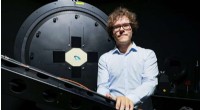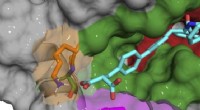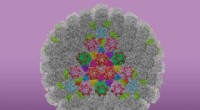
Wetenschap
How is it possible that you can eat sodium and chlorine in a compound together when they are dangerous elements apart?
However, when they combine to form sodium chloride (NaCl), commonly known as table salt, they undergo a chemical transformation. This transformation creates a completely new substance with vastly different properties from its individual components.
Dit is waarom:
* ionische binding: Sodium and chlorine bond ionically. Sodium readily loses an electron to become a positively charged sodium ion (Na+). Chlorine readily gains an electron to become a negatively charged chloride ion (Cl-). These opposite charges attract strongly, forming a stable ionic bond.
* Neutralization of Properties: The strong electrostatic attraction between the oppositely charged ions essentially neutralizes their individual reactivity and toxicity. The sodium and chlorine atoms are no longer present in their original forms; they are part of a new, stable compound.
* New Properties: Table salt has entirely different properties than sodium and chlorine. It's a white, crystalline solid that is readily soluble in water. It's essential for human health and plays a crucial role in various biological processes.
Samenvattend: De chemische reactie tussen natrium en chloor creëert een nieuwe verbinding, natriumchloride, met eigenschappen die volledig verschillen van zijn samenstellende elementen. Dit is een fundamenteel concept in de chemie, dat aantoont hoe het combineren van elementen kan leiden tot de vorming van nieuwe stoffen met unieke kenmerken.
 Noem twee verbindingen in niet -verontreinigde lucht?
Noem twee verbindingen in niet -verontreinigde lucht?  Fluoride te hulp? Het aanpakken van de uitdaging van antibioticaresistente bacteriën
Fluoride te hulp? Het aanpakken van de uitdaging van antibioticaresistente bacteriën  Is de condensatie van waterdamp een chemische recion?
Is de condensatie van waterdamp een chemische recion?  Is de productie van licht door een lamp Physicernor Chemicaln verandering?
Is de productie van licht door een lamp Physicernor Chemicaln verandering?  Polymere membranen gebruiken om industriële scheidingen op te ruimen
Polymere membranen gebruiken om industriële scheidingen op te ruimen
 Droge bliksem veroorzaakt enkele van de meest verwoestende en kostbare bosbranden in Californië, zo blijkt uit onderzoek
Droge bliksem veroorzaakt enkele van de meest verwoestende en kostbare bosbranden in Californië, zo blijkt uit onderzoek Schaliegas is een van de minst duurzame manieren om elektriciteit te produceren, onderzoek vindt
Schaliegas is een van de minst duurzame manieren om elektriciteit te produceren, onderzoek vindt Hoe oude soorten overleefden of stierven in hun oude huis in Kentucky
Hoe oude soorten overleefden of stierven in hun oude huis in Kentucky  Wetenschappers meten nieuwe diepten aan de onderkant van de hydrologische cyclus
Wetenschappers meten nieuwe diepten aan de onderkant van de hydrologische cyclus Hoe wordt fruit gevormd in planten?
Hoe wordt fruit gevormd in planten?
Hoofdlijnen
- Waarom zijn de hersenen van mensen verschillend van grootte?
- Welk type reproductie heeft gebeurd wanneer één organisme genetisch identieke nakomelingen produceert?
- Waarom hebben jullie botcellen en rood bloed minder mitochondriën?
- Wat is biologische besmetting die voortvloeit uit weersomstandigheden?
- Wat wordt amylase beïnvloed door een lage pH?
- Wat zijn de onderdelen en functies van het menselijke controlesysteem?
- Is het zeldzaam dat de zachte delen van een organisme een fossiel worden?
- Verlichting aan het water verstoort de natuur in het omliggende ecosysteem drastisch
- Wat is een monatomische anionennaam voor F?
- Digitaliseren en repliceren van de wereld van materialen

- De fundamentele aard van defecten op atomaire schaal begrijpen

- Nieuwe strategie om subtypes van sleuteleiwit precies te targeten

- Gerecycled katoen wordt nieuwe stof

- Studie levert tot nu toe de duidelijkste beelden van HSV-1 op, het virus dat koortsblaasjes veroorzaakt

 Homo naledi en Australopithecus sediba worden tentoongesteld in Perot Museum
Homo naledi en Australopithecus sediba worden tentoongesteld in Perot Museum Hoe struiken de positieve bijdrage van veengebieden aan het klimaat verminderen
Hoe struiken de positieve bijdrage van veengebieden aan het klimaat verminderen  Welke van de volgende factoren heeft geen invloed op THR -evenwicht een chemische reactie wanneer deze wordt veranderd?
Welke van de volgende factoren heeft geen invloed op THR -evenwicht een chemische reactie wanneer deze wordt veranderd?  Wanneer zijn de Amerikaanse maanlandingen?
Wanneer zijn de Amerikaanse maanlandingen?  Plasmonische zilveren nanodeeltjes gaan op weg naar ultrasnelle detectie van één molecuul
Plasmonische zilveren nanodeeltjes gaan op weg naar ultrasnelle detectie van één molecuul Egg in Bottle Science Projects
Egg in Bottle Science Projects  Hoe noem je het vermogen van een vloeistof om een opwaartse kracht uit te oefenen op object resulterend in schijnbaar verliesgewichtobject?
Hoe noem je het vermogen van een vloeistof om een opwaartse kracht uit te oefenen op object resulterend in schijnbaar verliesgewichtobject?  Wat is een geconjugeerd zuur-basepaar?
Wat is een geconjugeerd zuur-basepaar?
- Elektronica
- Biologie
- Zonsverduistering
- Wiskunde
- French | Italian | Spanish | Portuguese | Swedish | German | Dutch | Danish | Norway |

-
Wetenschap © https://nl.scienceaq.com

